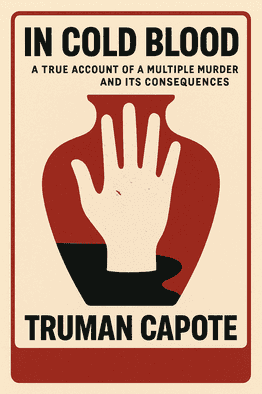What is The Cuckoo's Calling by Robert Galbraith about?
The Cuckoo's Calling follows disabled Afghan war veteran Cormoran Strike, a struggling private investigator hired to investigate the death of supermodel Lula Landry. Initially ruled a suicide, Strike uncovers a complex murder plot involving family secrets, inheritance, and jealousy. Set in London's diverse neighborhoods, the mystery introduces Strike and his resourceful temp secretary Robin Ellacott as they navigate Lula's glamorous yet dark world to expose the truth.
Who is Robert Galbraith and why did J.K. Rowling use a pseudonym?
Robert Galbraith is the pseudonym J.K. Rowling adopted to publish crime fiction separate from her Harry Potter legacy. The Cuckoo's Calling was published in April 2013, allowing Rowling to explore the detective genre without preconceived expectations. After the pseudonym was revealed, the book became an international bestseller. Rowling continues writing the Cormoran Strike series under this name, with author royalties donated to The Soldier's Charity.
Is The Cuckoo's Calling worth reading?
The Cuckoo's Calling is worth reading for mystery fans who appreciate classic detective fiction with modern sensibilities. The novel features intricate plotting, well-developed characters, and atmospheric London settings. While it follows traditional mystery formulas with old-fashioned virtues, Rowling's prose and character development elevate the story. The book won the 2013 Los Angeles Times Book Prize and launched a successful series with eight installments.
Who should read The Cuckoo's Calling by Robert Galbraith?
The Cuckoo's Calling appeals to readers who enjoy traditional detective mysteries, character-driven narratives, and atmospheric London settings. Fans of Agatha Christie's classic whodunits and readers seeking well-crafted, taut mysteries will appreciate Rowling's meticulous plotting. The book suits those interested in war veteran stories, complex family dynamics, and slow-burn investigations. If you enjoyed classic British detective fiction or modern series like Sherlock adaptations, this book delivers satisfaction.
What happens at the end of The Cuckoo's Calling?
Strike confronts John Bristow in his office, revealing that Bristow murdered both Lula and her friend Rochelle, as well as his childhood brother Charlie. Bristow killed Lula for her inheritance after learning she wrote a will leaving everything to her biological brother Jonah. When Bristow attempts to stab Strike, Robin arrives and helps subdue him. Robin decides to stay on permanently as Strike's assistant, and Strike finally seeks medical treatment for his injured leg.
How does Cormoran Strike solve Lula Landry's murder in The Cuckoo's Calling?
Strike pieces together the truth by interviewing Lula's associates and discovering key details overlooked by police. He learns that Tansy Bestigui witnessed the murder from her balcony after being locked outside by her husband. Strike realizes Lula was researching her biological family and created a will leaving her estate to her biological brother Jonah. After Rochelle's murder, Strike deduces the killer needed to eliminate anyone who knew about the will, leading him to John Bristow.
What is the relationship between Cormoran Strike and Robin Ellacott?
Strike and Robin develop a professional partnership built on mutual respect, with underlying romantic tension. Robin begins as Strike's temp secretary but proves exceptionally resourceful and intelligent, earning a permanent position. Their relationship remains platonic throughout the first book, though both acknowledge potential romantic possibilities. The dynamic evokes classic detective duos—Robin to Strike's Batman, Nora to his Nick—with Robin playing a crucial role in solving cases and even saving Strike's life.
What are the main themes in The Cuckoo's Calling by Robert Galbraith?
The Cuckoo's Calling explores class divisions, identity, and the pursuit of belonging through Lula's adoption into an upper-class white family despite her Black biological heritage. Themes of jealousy, inheritance, and family dysfunction drive the murder plot, as John Bristow's envy leads to tragedy. The book examines resilience through Strike's physical and psychological war wounds and Robin's determination despite personal challenges. Additionally, appearances versus reality permeate the story, from the glamorous fashion world to hidden family secrets.
How does The Cuckoo's Calling compare to other Cormoran Strike books?
The Cuckoo's Calling establishes the foundational relationship between Strike and Robin that deepens throughout the series. As the first book, it focuses heavily on character introduction and world-building with a more traditional mystery structure. Subsequent books—The Silkworm, Career of Evil, Lethal White, Troubled Blood, The Ink Black Heart, The Running Grave, and The Hallmarked Man—expand the complexity of cases and evolve Strike and Robin's relationship. The debut remains the most accessible entry point with classic detective fiction appeal.
What is the writing style of The Cuckoo's Calling?
Rowling employs a Dickensian, descriptive style that emphasizes atmospheric detail and character depth. The prose showcases her linguistic finesse with contemporary London settings from Mayfair's hushed streets to East End pubs. While some critics found the style "clunky" and "over-descriptive," others praised it as wonderfully fresh, funny, and engaging. The narrative follows traditional mystery conventions with methodical clue-planting and a climactic confession scene reminiscent of Agatha Christie.
What are criticisms of The Cuckoo's Calling by Robert Galbraith?
Critics noted that Robin's character displays "meek and anachronistic feminine behavior" for a post-Lisbeth Salander era. Some reviewers found the psychological motivations behind the crime "a bit of a stretch" and conclusions "too out-of-nowhere." The cookie-cutter traditional mystery formula and obligatory character introductions felt dated to modern thriller readers. Additionally, NPR criticized it as clichéd British detective fiction with weak characters, though most reviews were positive about the plotting and characterization.
Why is The Cuckoo's Calling still relevant for mystery readers today?
The Cuckoo's Calling revitalized traditional detective fiction by proving classic mystery structures still captivate modern audiences when executed skillfully. Rowling's intricate plotting, realistic characters, and taut storytelling demonstrate that old-fashioned virtues—methodical investigation, clue-planting, and character development—remain compelling. The book's success launched an eight-book series continuing through 2025, with The Hallmarked Man published in September 2025. Its blend of contemporary settings with timeless mystery conventions appeals to both classic detective fans and new readers seeking well-crafted whodunits.














